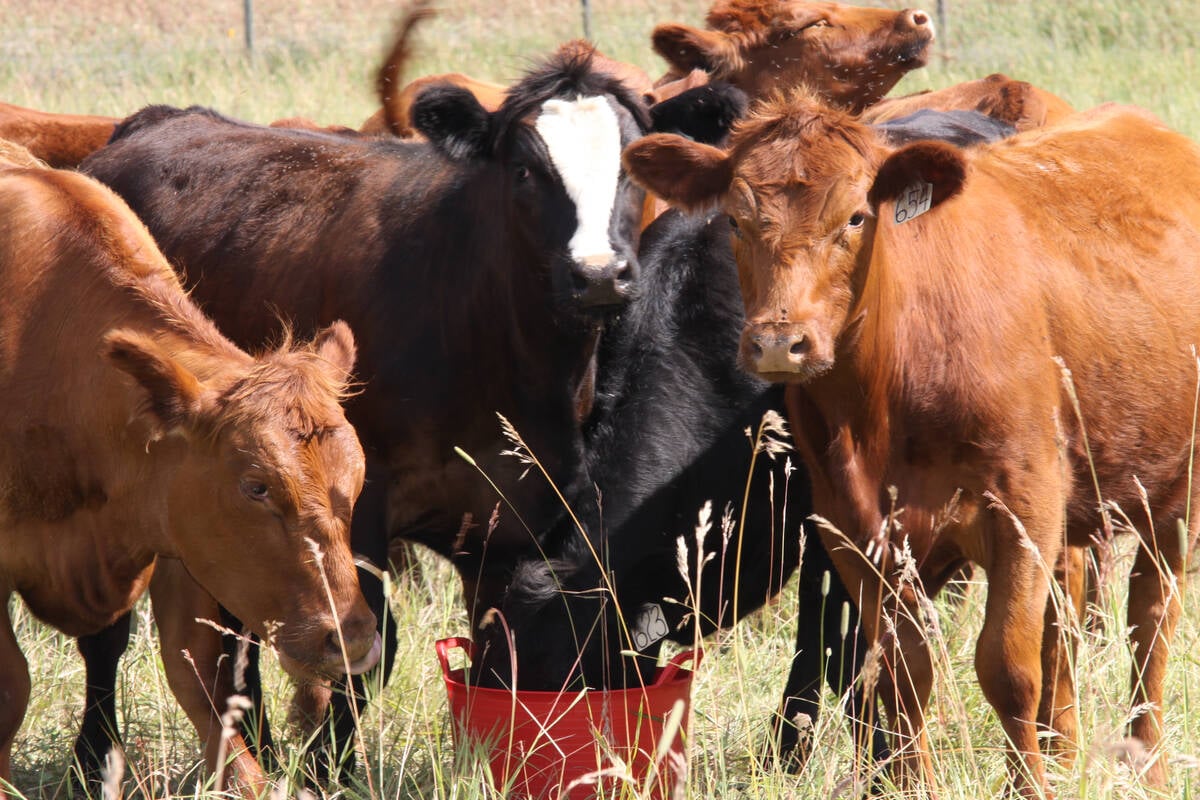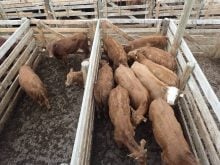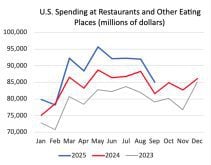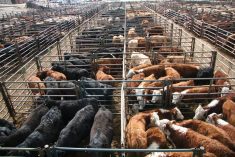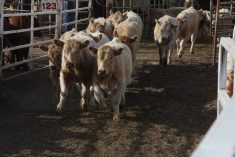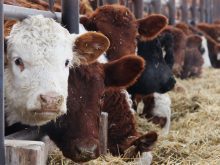For the week ending Oct. 25, western Canadian yearling markets traded steady to $10 per hundredweight below prices from the previous week.
Calves in the range of 550 to 850 pounds were down $8 to $12 on average, while feeders weighing less than 550 lb. were relatively unchanged compared to seven days earlier.
U.S. government comments regarding the high price of beef set a negative tone.
Read Also

The Western Producer Livestock Report – November 6, 2025
Western Producer Livestock Report for November 6, 2025. See U.S. & Canadian hog prices, Canadian bison & lamb market data and sales insights.
U.S. president Donald Trump said that ranchers have to get the price of beef down, which drew a tsunami of comments from U.S. cattle groups.
Secondly, media comments that agriculture secretary Brooke Rollins was to meet with her Mexican counterpart to open the border to Mexican feeder cattle contributed to the weaker tone.
The TEAM auction market report had a group of 175 larger frame, lower flesh Charolais based steers averaging 1,050 lb. with full processing data but no implants coming straight off pasture valued at $440 per cwt. f.o.b. ranch near Elkhorn, Man. At the same video sale, a group of 118 Simmental cross heifers averaging 1,050 pounds with full processing data and implants on grass diet sold for $424 f.o.b. ranch near Drayton Valley, Alta., for delivery Nov. 3-8.
Late last month, a cattle producer south of Edmonton sold a pen-sized group of controlled weight gain backgrounded mixed steers with processing records and implants averaging 950 lb. for $500 per cwt. for delivery first half of Jan. 10-15, 2026, f.o.b. ranch.
At the Lloydminster ring sale, there was a smaller package of exotic yearling steers weighing 814 lb. that sold for $521 per cwt.
At the St Rose ring sale, red and black Simmental based steer calves weighing 718 lb. sold for $570 per cwt. and a smaller package of Charolais heifers with a mean weight of 716 lb. traded for $517 per cwt.
At the Beaverlodge sale, a smaller group of black mixed steer calves averaging 583 lb. traded for $627 per cwt.
At the Ponoka sale, a smaller group Angus steers weighing 632 lb. coming off cows, hay and grass diet with full processing data traded for $620 per cwt. At the same sale, Simmental based heifers coming straight off their mothers and pasture weighing 608 lb. with full processing data sold for $550 per cwt.
At the Killarney sale, a smaller package of black steer calves weighing 546 lb. sold for $709 per cwt. and their lighter brothers scaled at 486 lb. were valued at $780 per cwt.
The U.S. Department of Agriculture did not release its Cattle On Feed Report due to the government shutdown. Our estimates have U.S. cattle on feed 180 days or more as of Oct. 1 at 1.397 million head, up 556,000 head from Oct. 1, 2024.
In addition to the U.S. government remarks, the cattle market has some bearish fundamentals in the short-term.
The U.S. Federal Reserve and the Bank of Canada are concerned about rising unemployment, slower economic growth and weaker consumer spending.
Secondly, the United States is contending with an extended government shutdown. At the time of writing this article, the U.S. government stated that food stamps will stop on Nov. 1. This provides $187 as month to 41.7 million Americans and will significantly lower U.S. domestic beef demand.
Markets go down twice as fast as they go up.
There is an old saying that when the front page of Time magazine states that the world is running out of wheat, the top of the wheat market is in place and prices are going lower.
The same can be said about government involvement. When the U.S. government says it is getting involved, the highs of the market are in place and the market is going down. Governments are always too late to respond.


